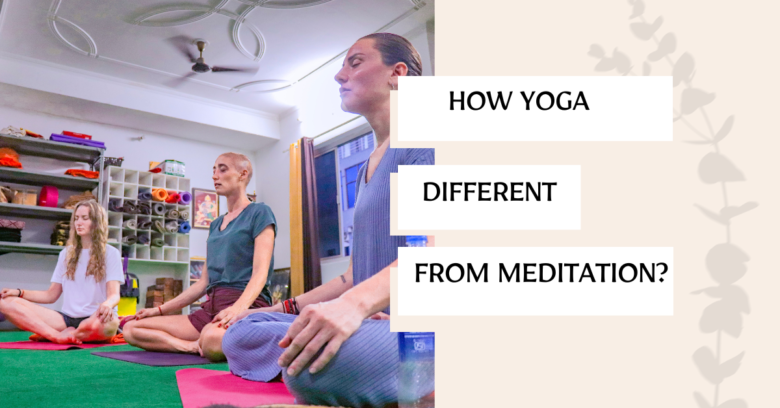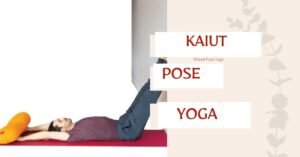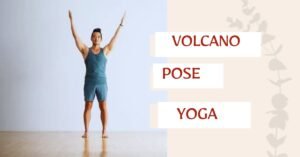In the world of health and wellness 🍃, yoga 🧘♀️ and meditation 🧘♂️ often go together, both celebrated for boosting physical health 💪, mental clarity 🧠, and inner peace ☮️. Though they share benefits, it’s key to see how yoga and meditation differ in principles, techniques, and gains.
Whether you’re into yoga, meditation, or seeking holistic wellness, knowing these differences is crucial for your journey 🌟. This exploration aims to highlight what sets yoga apart from meditation, offering insights for a deeper understanding.
How is Yoga Different from Meditation? Let’s explore their unique aspects, with tips from Aatm Yogashala, to better grasp their roles in wellness.
How is yoga different from meditation?
Yoga, originating from ancient India, is a holistic discipline involving physical postures (asanas), breath control (pranayama), and meditation, aiming at developing harmony in the body, mind, and environment. It encompasses a wide range of practices, from gentle stretches to challenging poses, promoting flexibility, strength, and stress relief.
Meditation, on the other hand, is primarily an exercise in mental focus and concentration. Its core objective is to achieve a deep state of peace and mind-body relaxation, often by focusing on a particular thought, object, or activity to train attention and awareness, and eliminate the stream of jumbled thoughts that may clutter the mind.
While yoga can include meditative practices, its scope is broader, encompassing physical health and wellness, making it distinct from meditation, which is solely concentrated on mental and spiritual well-being.
What is Yoga?
Yoga is a comprehensive discipline originating from ancient India, comprising physical postures (asanas), breathing techniques (pranayama), and meditation. It aims to promote harmony between the mind, body, and spirit, enhancing overall health and well-being.
Unlike meditation, which focuses primarily on the mind and achieving mental clarity, yoga incorporates physical movements that help improve flexibility, strength, balance, and physical health.
Through regular practice, yoga not only contributes to physical fitness but also fosters mental calmness, reduces stress, and improves concentration. It is a holistic approach to health that can be adapted to suit individual needs, making it accessible to people of all ages and fitness levels.
Types of Yoga
There are several types of yoga, each offering a unique approach to the practice and catering to various preferences and objectives. Here are some of the most popular:
- Hatha Yoga: Often considered a foundation for all yoga styles, Hatha Yoga focuses on physical postures and breath control, making it ideal for beginners.
- Vinyasa Yoga: Known for its fluid movement and coordination with the breath, Vinyasa Yoga offers a more dynamic practice that helps improve flexibility and strength.
- Iyengar Yoga: This style emphasizes precision and alignment in the execution of postures, with the use of props like blocks and straps to aid practitioners.
- Ashtanga Yoga: A rigorous style that follows a specific sequence of postures, promoting strength, flexibility, and stamina. It’s suited for those looking for a challenging practice.
- Bikram Yoga: Performed in a hot room, Bikram Yoga consists of a series of 26 poses that are designed to work every part of the body.
- Kundalini Yoga: Combining meditation, chanting, and specific exercises, Kundalini Yoga aims to awaken the energy at the base of the spine and draw it upward through the chakras.
- Restorative Yoga: With an emphasis on relaxation, Restorative Yoga uses props to support the body in comfortable positions, encouraging deep relaxation and stress reduction.
Also Read:
- 200 HOUR TEACHER TRAINING COURSE
- BEST YOGA RETREAT IN RISHIKESH
- Importance of Yoga for Students with 20 Benefits
What is Meditation?
Meditation is a practice of mindfulness and concentration that guides the mind toward a state of calmness, focused attention, and heightened awareness. Unlike yoga, which integrates physical poses and breathing exercises, meditation primarily involves mental exercises.
The goal is to achieve a mentally clear and emotionally calm and stable state. Through various techniques, such as focusing on the breath, chanting mantras, or visualizations, meditation helps reduce stress, enhance concentration, and promote a deep sense of peace and well-being.
This practice can be performed while sitting, standing, walking, or in other positions, making it versatile and accessible to everyone. Its origins can be traced back thousands of years, crossing cultural and religious boundaries, and it has been adopted and adapted worldwide to suit various lifestyles and philosophies..
How to Start Meditating
Starting a meditation practice can seem daunting at first, but with a few simple steps, you can begin to experience its many benefits. Here’s a beginner’s guide to kickstart your meditation journey:
- Find a Quiet Space: Choose a tranquil place where you won’t be disturbed. It can be a corner of your room, a peaceful spot in your garden, or any place that feels comfortable and calming.
- Set a Time Limit: Begin with short sessions, about 5 to 10 minutes, and gradually increase the duration as you become more comfortable with the practice.
- Adopt a Comfortable Position: Sit in a comfortable posture, with your back straight but not stiff. You can sit on a chair, a cushion on the floor, or anywhere you feel relaxed.
- Focus on Your Breath: Close your eyes and bring your attention to your breath. Notice the sensation of air entering and leaving your nostrils, or the rise and fall of your chest.
- Be Kind to Your Wandering Mind: It’s natural for your mind to wander. When you notice your thoughts straying, gently redirect your focus back to your breath without judgment.
- Make It a Habit: Consistency is key. Try to meditate at the same time each day, whether it’s morning, during your lunch break, or before bed.
Starting with these simple steps, meditation can become an integral part of your daily routine, promoting mental clarity, emotional stability, and a deeper sense of inner peace.
Types of Meditation
Meditation encompasses a wide variety of practices, each with its techniques and goals. Here are some of the main types of meditation that have been embraced globally:
- Mindfulness Meditation: This form of meditation is rooted in Buddhist teachings and is the most commonly practiced in the West. It involves paying attention to thoughts, feelings, and sensations in a non-judgmental way, fostering a state of awareness and presence.
- Transcendental Meditation: A technique introduced by Maharishi Mahesh Yogi, transcendental meditation involves silently repeating a mantra to help the practitioner transcend to a state of pure consciousness, promoting relaxation, stress reduction, and self-development.
- Guided Meditation: Also known as guided imagery or visualization, this technique involves forming mental images of places or situations you find relaxing. It’s often led by a guide or teacher, making it accessible for beginners.
- Zen Meditation (Zazen): Practiced within the Buddhist tradition, Zen meditation involves observing the breath and the mind and can be done while sitting in a lotus or half-lotus position. It emphasizes rigorous self-restraint, meditation-practice, insight into the nature of mind (enlightenment), and the personal expression of this insight in daily life.
- Loving-Kindness Meditation (Metta): Aiming to cultivate an attitude of love and kindness toward everything, practitioners focus on sending messages of love and kindness to the world, themselves, and their loved ones.
- Chakra Meditation: This involves concentrating on the body’s different chakras (energy centers) and using visualization or chanting to open and align them, believed to lead to spiritual awakening and harmony.
- Yoga Nidra: Also known as yogic sleep, this is a state of conscious deep sleep for extreme relaxation and subtler spiritual exploration. It’s guided by a narrator and involves scanning the body, breath awareness, and cultivating a deep state of relaxation.
Yoga Vs Meditation Course
| Aspect | Yoga | Meditation |
|---|---|---|
| Definition | A holistic practice integrating physical poses, breath control, and meditation to enhance physical and mental well-being. | A practice focusing on mindfulness and concentration to reach a state of calm and heightened awareness. |
| Primary Focus | Physical health through poses, mental well-being through breath control and meditation. | Mental well-being through techniques like mindfulness, visualization, and chanting. |
| Benefits | Improves flexibility, strength, balance, reduces stress, enhances concentration. | Reduces stress, enhances concentration, promotes emotional health and peace. |
| Practice setting | Can be practiced in a studio, home, or outdoors with minimal equipment. | Can be practiced anywhere, often without any special equipment. |
| Physical Component | Significant, with an emphasis on poses and physical fitness. | Minimal, focuses more on mental exercise though can include walking meditation. |
| Varieties | Hatha, Vinyasa, Iyengar, Ashtanga, Bikram, Kundalini, Restorative. | Mindfulness, Transcendental, Guided, Zen, Loving-Kindness, Chakra, Yoga Nidra. |
| Aim | To achieve a healthy body and mind, increase physical health, and promote spiritual growth. | To achieve mental clarity, emotional calm, and stability, along with spiritual insight. |
| Accessibility | Generally accessible to all ages and fitness levels with modifications. | Accessible to everyone regardless of physical fitness. |
| Origin | Ancient India, with roots in various eastern philosophies. | Has origins in various cultures and religions, including Buddhism and Hinduism. |
Best School For Yoga in India
When searching for the best yoga school in India, Rishikesh stands out as a premier destination, often referred to as the “Yoga Capital of the World.” Among the most renowned is Aatm Yoga Shala founded by Amit Daswal Guruji.
This school offers a comprehensive yoga training program that deeply immerses students in the traditional aspects of yoga, including asanas (postures), pranayama (breath control), meditation, and the philosophical underpinnings of yoga.
The serene environment, coupled with the expertise of seasoned instructors, makes this place ideal for those seeking to deepen their practice or pursue yoga teaching certifications. The curriculum is rooted in classical Hatha Yoga and Vedanta philosophies, providing a holistic approach to physical, mental, and spiritual well-being.
Conclusion for How is Yoga Different from Meditation
Understanding “How is Yoga Different from Meditation?” is essential for anyone looking to explore these ancient practices deeply. While both yoga and meditation seek to bring about a sense of peace, clarity, and well-being, they do so through different paths—yoga emphasizes physical movement and discipline, integrating the mind and body through various poses and breathwork. In contrast, meditation focuses primarily on the mind, cultivating awareness, and inner silence. Together, they offer a comprehensive approach to wellness, addressing the needs of the body, mind, and spirit. Whether you choose yoga, meditation, or a combination of both, you embark on a rewarding journey toward greater health, awareness, and harmony.
FAQs for How is Yoga Different from Meditation
What is the difference between yoga and meditation in the table provided?
The table differentiates yoga and meditation based on their definition, primary focus, benefits, practice setting, physical component, varieties, aim, accessibility, and origin. Yoga is described as a holistic practice that integrates physical poses, breath control, and meditation to enhance physical and mental well-being. Meditation, on the other hand, focuses on mindfulness and concentration to achieve a state of calm and heightened awareness.
Is yoga or meditation better for anxiety?
Both yoga and meditation are effective in managing anxiety, but they address this concern in slightly different ways. Yoga, through its physical postures and breathing exercises, helps reduce physical tension and stress, which can alleviate symptoms of anxiety. Meditation focuses on calming the mind and reducing racing thoughts, promoting mental relaxation. The choice between them depends on individual preferences and the specific aspects of anxiety they wish to address.
What are the benefits of yoga and meditation for students?
Yoga and meditation offer numerous benefits for students, including improved concentration, stress reduction, enhanced physical health, and emotional balance. These practices can help students manage academic and social pressures more effectively, leading to better learning outcomes and overall well-being.
How are yoga and meditation related?
Yoga and meditation are deeply interconnected practices with shared origins in ancient spiritual traditions. Yoga often incorporates meditation as part of its practice, aiming to achieve a state of mental clarity and calmness. Meditation can be considered one of the components of yoga, focusing on the mental and spiritual aspects, while yoga encompasses a broader spectrum including physical postures and breath control. Together, they complement each other, enhancing physical, mental, and spiritual health.
Is yoga considered meditation or exercise?
Yoga is considered both meditation and exercise. It combines physical movements, known as asanas, with breathing techniques and meditation, creating a holistic practice that enhances physical fitness, mental clarity, and spiritual growth. While the physical aspect of yoga strengthens and tones the body, its meditative and breathing elements calm the mind, making it a comprehensive discipline that addresses the well-being of both body and mind.



